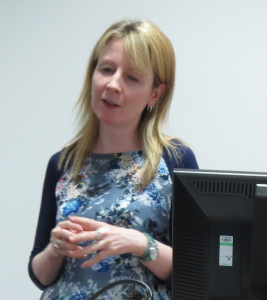It was a fairly select band of participants that joined us at Glasgow Caledonian University for the North-of-the-Border leg of our consultation process. In fact, having rather less than 40 in the room allowed us to do more whole-group discussion, which I felt produced some consensual and well-focused outcomes. For a brilliant overview of the day, see Sheila MacNeil’s doodle on flickr and her own blog post. Thanks to Sheila and her team at GCU we also have a full recording of the main sessions via Adobe Connect.
Our other partners for this event were RSC Scotland. It is always good to hear from people well connected with practitioners that the digital student work is relevant and inspiring.
Reflecting on the outcomes, some key messages for Jisc and partners are emerging from institutions. There are concerns that student expectations may be unrealistic or inappropriate. For example their use of iTunesU and similar services may lead them to see world-class lecturing as the only measure of a quality experience. Or they may assess staff responsiveness in terms more suited to an online enquiry service. Expectations of access – to networks and services, licenses, software and hardware etc – are high on entry and become higher when students begin comparing their experiences with each other, not always understanding that the needs of students in different subject areas will be different. Parents have a higher-than-ever stake in the quality of the student experience and may use visible proxies (‘shiny things’) rather than the less tangible features of learning to decide whether they are getting value for money.
The consequences of failing to meet these expectations may be student complaints in the short term, and problems with recruitment and retention in the longer term – though more study is needed before we can say for sure how perceptions of the digital environment are contributing to students’ overall (dis)satisfaction. All of these concerns lead institutions to consider how they introduce students to digital study and how they manage expectations – in both directions – through dialogue and co-development.
When it comes to opportunities, participants see many ways in which an enhanced digital experience can support student aspirations: employability, confidence and resilience, smarter working, a better network of contacts, a richer learning experience and leadership skills are just some of the advantages. At the same time organisational priorities which can be addressed through developing the digital environment include branding and marketing, better partnerships, stronger management of knowledge assets, and a more authentic curriculum. There are many overlaps between this list and Jisc’s previous work on business and community engagement. Several people have also pointed out the relevance of Mark Stubbs’ ‘CorePlus’ model at MMU, which acknowledges that much digital practice makes use of non-institutional technologies, and has been used to help manage student expectations about IT support beyond the ‘core’ institutional systems.
As ever, it was hugely valuable to have student input to the event, and this helped us build a comprehensive list of recommendations on student engagement. There was also a call for a similar consultation process to be initiated with students as the lead players. Having some participants follow online via Adobe Connect added a new dimension and helped amplify the debate onto twitter. I will leave you to peruse ideas for action on the part of institutions and at national level: the outcomes from this and other events will shortly be collated and refined down to some key recommendations. These will in turn be considered at our final consultation event in Birmingham on 16th July. Book soon to have your say. And don’t miss us at the HEA Annual Conference in Aston on 3rd July or at the Academic Practice and Technologies conference in Greenwich on 8th.





One reply on “Friends in the North”
[…] week we hosted one of the Jisc Digital Student consultation events, in her summary of findings so far, Helen Beetham highlighted the importance of […]